The vibe coding approach works fabulously for quick prototyping and testing product-market fit. But when your user base grows and real customers rely on your product, you might hit a wall.
Performance bottlenecks begin to appear, and your team spends more time fixing bugs than adding new features. Suddenly, scaling becomes a nightmare. Here’s the good news: you can change that.
At Seedium, we believe vibe coding is a great way to get a product off the ground. But to scale such projects, you require veteran engineers who can keep things in check. In this article, we’ll discuss our approach to scaling vibe-coded apps and how you can rely on it to secure your product’s future.
Benefits and Limitations of Vibe Coding
Vibe coding (no-code development or AI-assisted coding) offers massive benefits for early-stage companies. Of course, its main advantage is speed. With artificial intelligence, prototypes that once required a week of engineering effort could now be created within days. This fast turnaround time is priceless for market testing or fundraising.
Vibe coding also lowers the barriers to entry for small or non-technical teams. A solo founder can ‘code’ an app by instructing the computer in plain English.
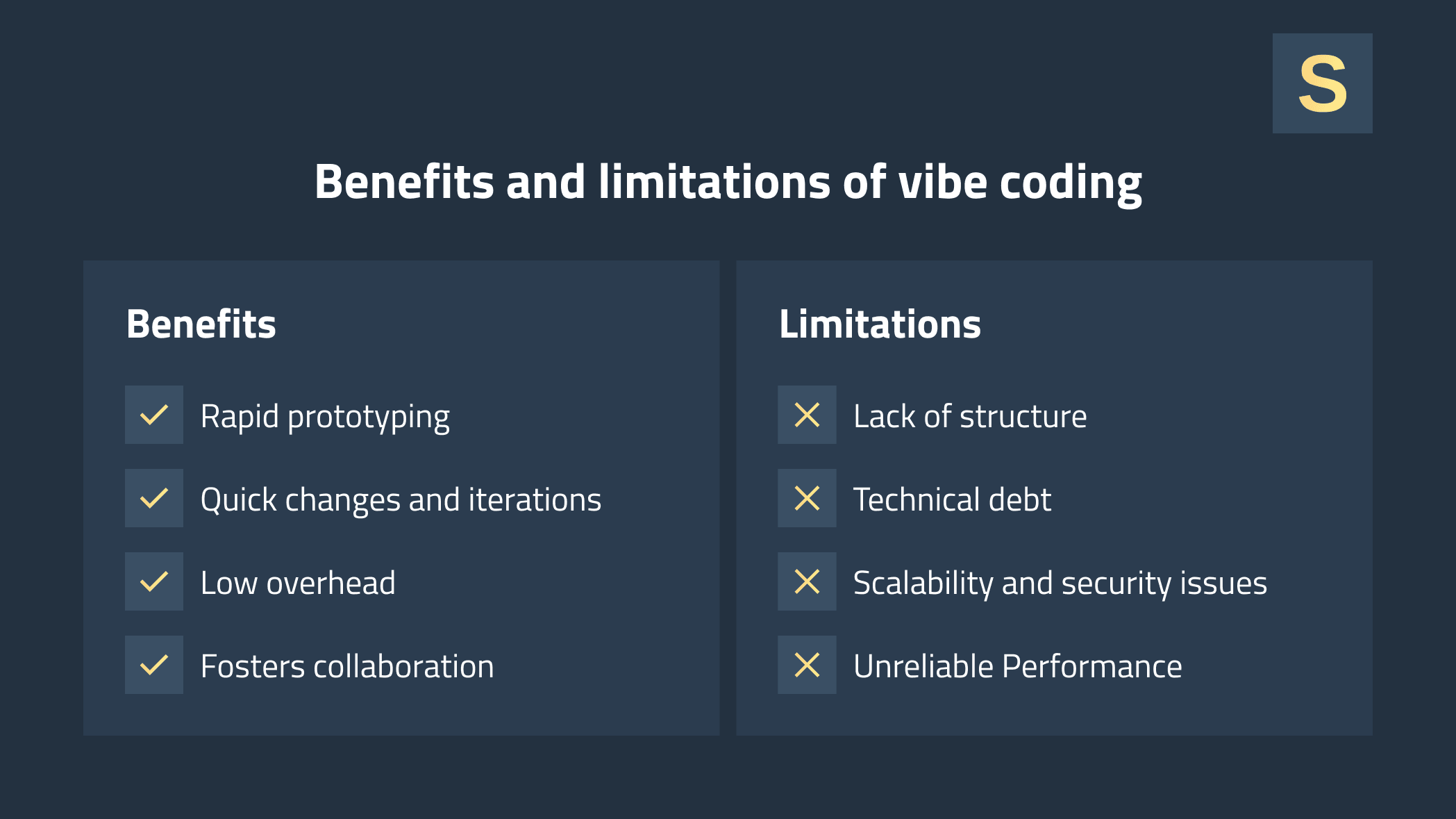
But all this speed comes at the cost of compromises. Common pitfalls of vibe-coded MVPs include the following:
- Fragile architecture. Early prototypes are unlikely to have an established architecture. You need practical experience to design how the different parts of the system will fit together or how data will travel.
- Performance bottlenecks. Vibe-coded apps can run into performance issues quickly. For example, the AI made suboptimal DB queries, or your no-code implementation isn't optimized for load. Higher usage or more data can make pages slow to load, and the server labors to keep pace.
- Security vulnerabilities. Speedy vibe coding development may mean skipping important security precautions. For example, an AI-generated login form might lack input sanitizing, proper password hashing, or entity access verification.
- Limited customization. No-code and AI tools offer pre-existing components that are hard to warp out of their intended use. As long as you stick to the sandbox, you can move quickly. But the moment you need a seriously custom feature or an oddball use case, you can get stuck.
- Technical debt and maintenance issues. Fast MVPs don't follow best practices such as writing tests, documentation, and organized, clean code. This ends up accumulating as technical debt – the codebase is messy and hard to maintain.
The essence is that vibe coding gets you ahead, but it is not an endgame plan for a mature product.
Signs It’s Time to Move Beyond Vibe Coding
How do you know that your team has grown beyond the "vibe" and needs a more conventional engineering approach? These are some signs that your vibe-coded MVP is bursting at the seams:
- Performance is suffering
- Your system experiences frequent outages or bugs
- You hit platform limits
- You find it hard to add new features
- Scaling infrastructure hurts
- Security or compliance concerns arise
- Your app provides an inconsistent user experience
- You lack developer control
Dealing with one or two of them might be manageable. But when several of them come into play, it's a clear indication that you need to supplement your initial vibe coding software development with something more rigorous. This is organic growth. More or less every successful startup goes through a phase of re-architecting and strengthening its product following an MVP that proves there is demand. The key is to catch the need for change early, when small cracks do not become monstrous crises.
How to Scale a Vibe-Coded App: Seedium's Smart Approach
At Seedium, we have developed a Smart Scaling Approach for vibe-coded apps. Our method is focused on making the most of the investment you've already made. We apply years of engineering expertise and modern automation (yes, we love AI too) to scale vibe-coded apps efficiently. Here's how we tackle it, step by step.
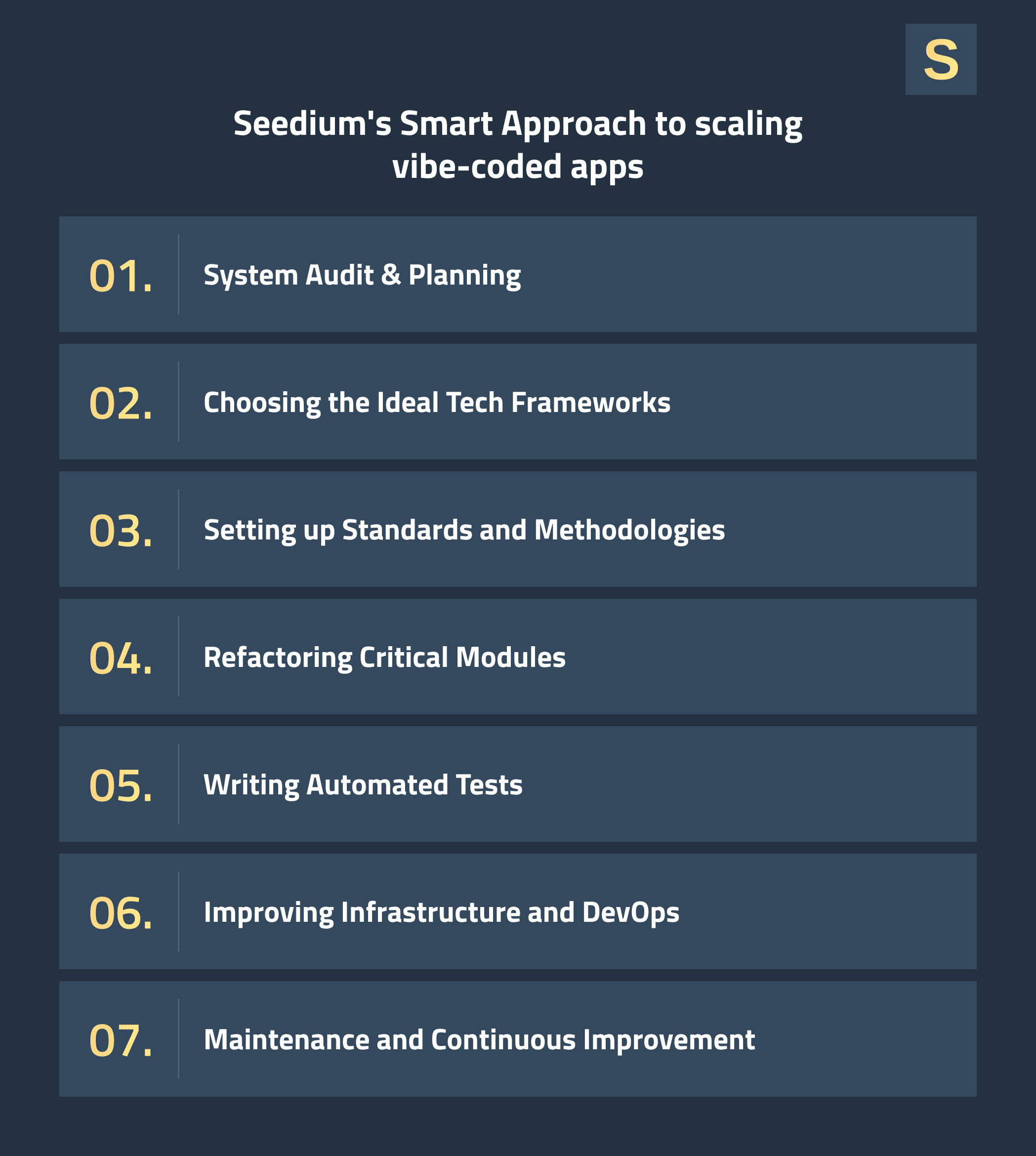
1. System Audit & Planning
Each project starts with a roadmap. We begin by thoroughly auditing your existing system, including critical paths, dependencies, and other factors. We also evaluate current performance metrics and bottlenecks. For example, where are the slowest requests, where is memory usage peaking, and how is the database handling queries?
Using insights from the audit, we create a product roadmap with clear prioritization to guide development efforts. Not everything can be fixed at once, so we set priorities on what hurts the most or is most critical in terms of risk. You end up with a clear plan at the end of this phase, with priority going to high-impact and quick-win changes first.
2. Choosing the Ideal Tech Frameworks
The majority of MVPs are built using whatever tool got the job done quickest, which is generally fine to start with. You might have a vanilla Node.js+Express backend, some serverless code, or a front-end slapped together with low-code widgets. When you need to scale a vibe-coded app, these choices are best re-evaluated.
We select frameworks and technologies best suited to your evolving requirements. This isn't a case of throwing everything away! Occasionally, it's just a case of adding more frameworks or higher-level tools where required.
The goal is to choose a tech stack that can handle growth in load, complexity, and multi-team collaboration. We consider factors like:
- How many users will we have in twelve months?
- Will there be parts of the app that need scaling independently (microservices vs monolith)?
- What is the team's (or your future hires') skillset?
The result might be the embrace of a proven web framework, the addition of an ORM for safe database access, or the use of a real-time data pipeline – whatever best meets the project's needs. By raising the tech foundations from the start, we set the stage for you to scale a vibe-coded app without continuously fighting to work around the flaws of your initial tools.
3. Putting Standards and Methodologies in Place
One of the hallmarks of a vibe-coded MVP is that it's typically Wild West code: different styles, no conventions, etc. To take it from that chaos to professional development, we implement strict standards and methodologies on the project. Think of this as laying down the law for code creation and upkeep going forward.
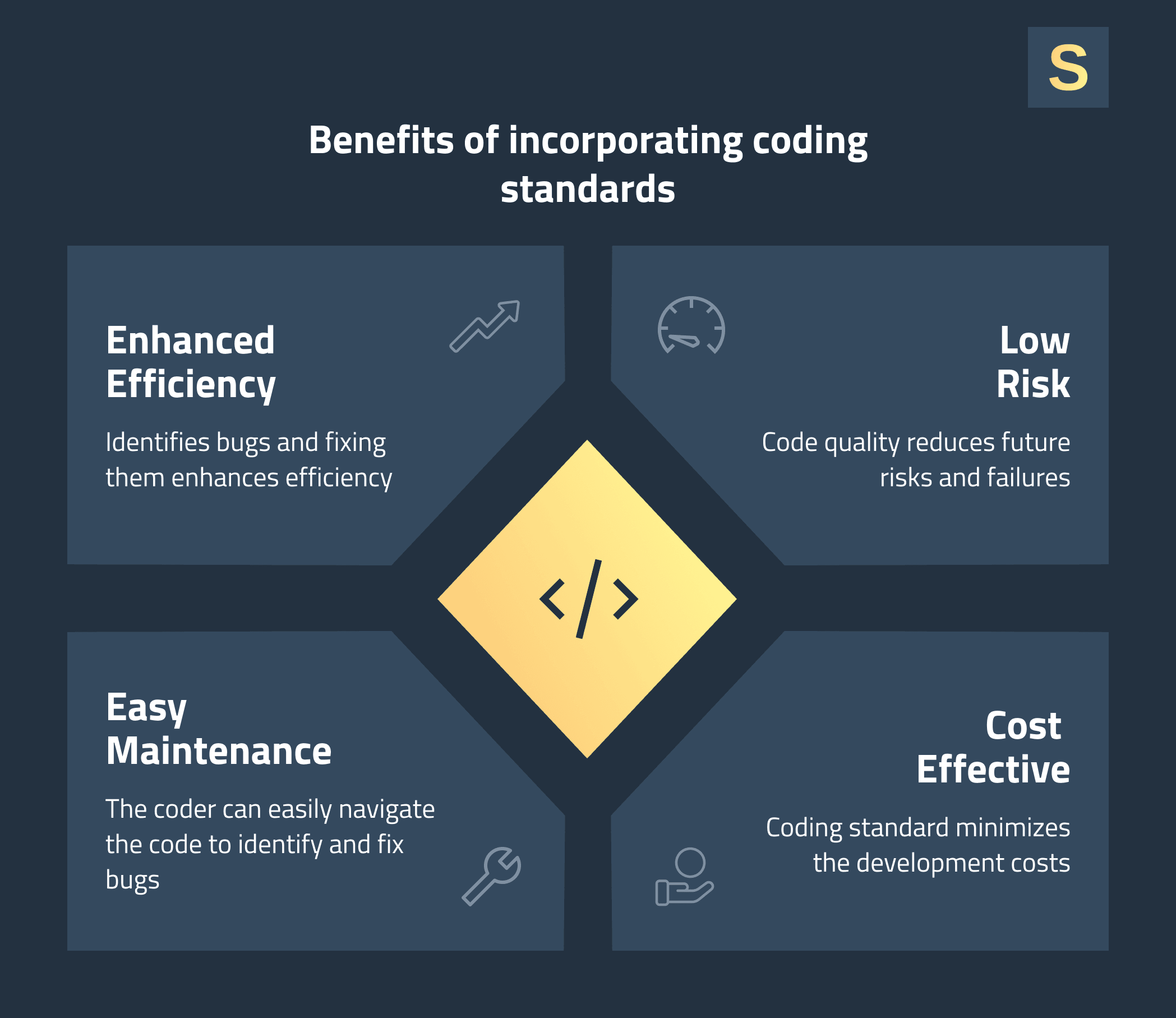
Some of the key standards we introduce are:
- Coding style. A consistent style makes the code easier to read, understand, and maintain. It also reduces the chance of merge conflicts and speeds up the onboarding of new developers.
- Architectural best practices. We define how the different parts of the app communicate with each other. For instance, how is the state managed? How do services or modules communicate with each other? We ensure there's a separation of concerns: UI vs business logic vs data access.
- Security protocols. Ensuring your app is compliant with OWASP Top Ten is a must-have. This includes addressing common security risks such as injection attacks, broken authentication, sensitive data exposure, insecure design, security misconfiguration, vulnerable components, identification and authentication failures, software and data integrity failures, logging and monitoring issues, and server-side request forgery (SSRF).
- Code reviews and documentation. Code changes must be reviewed for quality by a peer or senior dev. We also maintain minimal documentation: at least a good README, possibly an architecture diagram, and doc strings for complicated modules.
All of these standards may feel a bit strict, but they're the scaffolding that allows your vibe coding software development to scale. When everyone is coding by the same rules, the codebase is easy to manage as it grows. It's a shift to a more disciplined engineering approach – precisely what a startup needs to continue building new features regularly without the wheels falling off.
4. Refactoring Critical Modules First
With a plan and guidelines, we gradually improve the codebase. We do not suggest rewriting everything from scratch on day one. This is risky and usually unnecessary. Instead, we look for the most critical or problematic areas of the application and refactor those first.
We ensure the module meets the new standards and is cleaner and more modular in design. Refactoring is performed in small, controlled steps, and we verify that the app still works as expected after the change.
5. Writing Automated Tests
In the rush of building an MVP, tests are often neglected. However, as you transition to a mature product, testing becomes inevitable. We typically introduce several layers of testing:
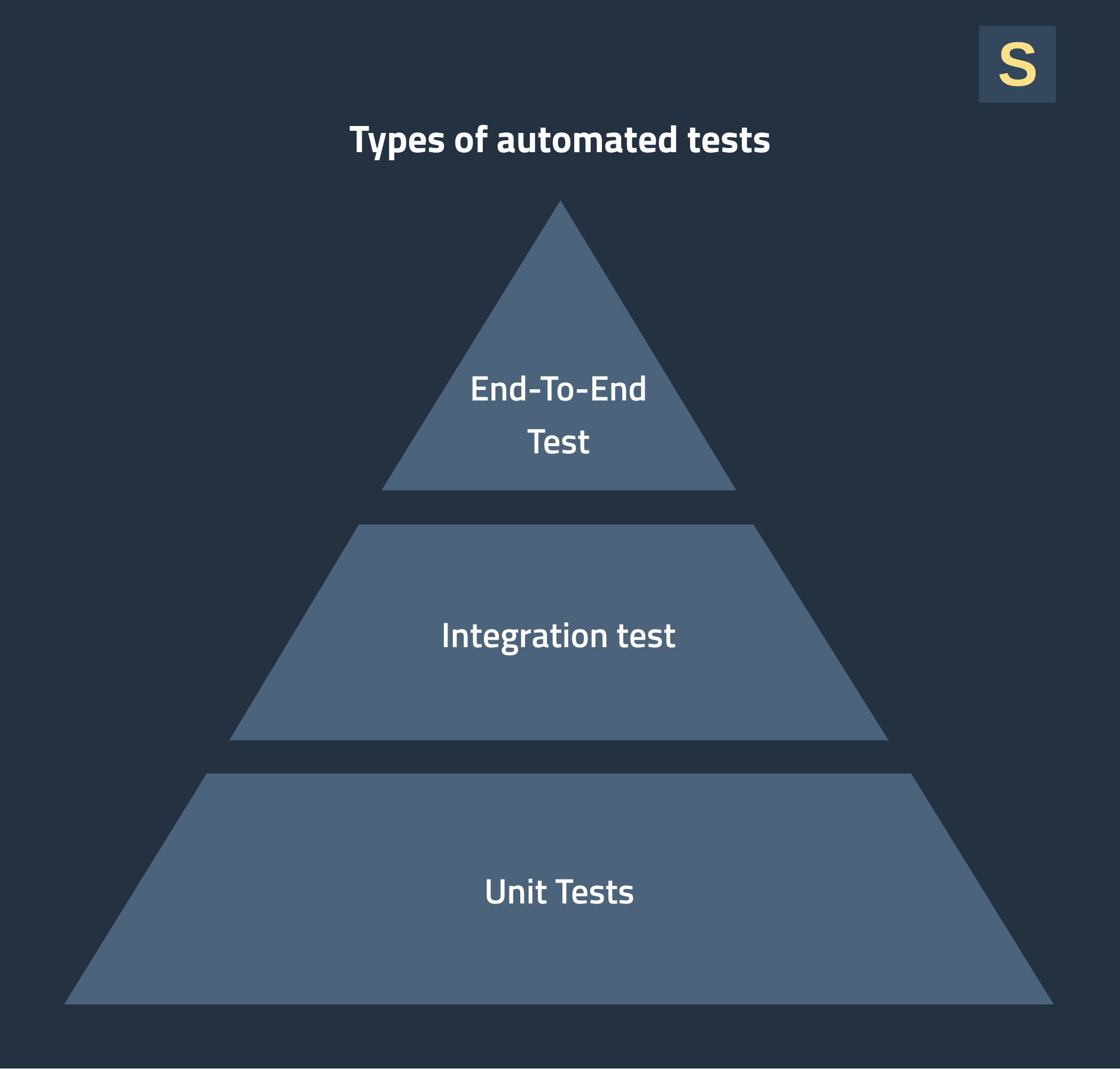
- Integration tests. Here, we test how the different parts of the system communicate with one another. We make sure the API layer can successfully talk to the database and run a complete user scenario end-to-end.
- End-to-end (E2E) tests. E2E tests simulate real user journeys from start to finish. We use specialized tools to automate a browser (for a web app) or other interfaces to mimic what a user does.
- Unit tests. These are tests that focus on extremely small pieces of code, usually one function or module. Unit tests ensure the business logic is correct.
By covering your app with this safety net of automated tests, we can be confident in moving faster. If we refactor code or add new features, the tests will catch if anything important broke. This helps avoid regression bugs (old issues coming back) and makes your vibe-coded app stable as it grows.
6. Improving Infrastructure and DevOps
A scalable app is not just about good code. It's also about the appropriate servers, services, and processes to handle growth elegantly. At this stage, we usually tackle some areas of prime concern:
- Setting up CI/CD. If your project doesn’t have established Continuous Integration/Continuous Deployment pipelines, we recommend configuring them for more reliable and stable software development cycles. CI/CD allows you to automate building, testing, and deployment processes, while ensuring better quality, speed, and monitoring.
- Monitoring & observability. We introduce tools to give you visibility into how your system behaves in real time. This includes monitoring for things like CPU utilization, memory, request latency, error rates, etc., and configuring alerts when things get out of bounds.
- Autoscaling & resource management. We enable your app to scale out to handle increased load automatically. For example, if you are running on cloud providers like AWS or GCP, we can use Kubernetes or the cloud provider's auto-scaling groups to spin up more instances of your app when traffic rises, and spin them down when the load decreases.
- Cost optimization. Cloud expenses can stealthily spiral out of control as you scale. We review your infrastructure for cost optimization: removing unused resources and right-sizing instances. The goal is to enable you to grow without an equally exponential increase in hosting bills.
- Security hardening. This involves using a secure vault or cloud secret manager so you’re not exposing API keys in code, running security scans on the code, and checking your dependencies for known vulnerabilities. We also review and enhance access controls: implementing least privilege to database accounts, rotating credentials regularly, etc.
By systematically strengthening the infrastructure along these dimensions, we ensure that your app's environment is as solid as the code itself.
7. Maintenance and Continuous Improvement
Gaining a stable, scalable state is a huge step, but the work isn’t done. A car needs occasional oil and tune-ups, and a software product needs maintenance to stay healthy. As the final step in our process, we focus on building processes for ongoing improvement.
We set out to provide you with a product and a process that your team will be able to continue developing with certainty. You will be able to expand your business and add value to users, rather than always being in a race to cover up fragile technology. That's the real reward of escaping vibe coding and moving into a more mature development process.
Case Study: From Vibe-Coded Prototype to Scalable SaaS Platform
Recently, we worked with a SaaS business management platform that started out as a vibe-coded prototype. It was a smart move as the proof of concept was successful and even gained the company paying users. But as they scaled up toward a wider rollout, the limitations of the no-code solution became a significant issue.
The platform began to experience excessive output delays and frequent disruptions to the workflow as usage increased. The no-code setup relied too much on certain tools (e.g., overuse of background job queues with Redis and BullMQ) that didn’t scale well.
The company then brought on Seedium to stabilize and expand the product into a full-featured, market-ready SaaS solution. In just the first 6 weeks of this engagement, the effect was dramatic.
- We refactored roughly 30% of the original codebase (the most mission-critical sections).
- Substituted some out-of-date or limiting components with modern, scalable alternatives.
- Moved CPU-intensive processes to microservices, improving performance, scalability, and system reliability.
- Provided custom PUB/SUB error notification to developer channels to speed up issue detection and reduce downtime.
The client started enjoying benefits right away. The application could sustain its growing number of users, and new functionality was being rolled out faster because the team wasn't playing permanent fire-suppression duty.
This is an example of how the timely involvement of experienced engineers can dramatically change the state of your vibe-coded application even in a short period of time.
Read the full case study on scaling a vibe-coded SaaS platform.
Test Your Vibe-Coded App for Scalability in 5 Minutes
One of the most prevalent errors startups make is planning for success without first testing whether their tech is ready to handle it. To rescue founders from scaling surprises, we designed a rapid 12-question assessment that determines if your app is ready to scale from a tech point of view.
This quiz distills Seedium's 8+ years of know-how in scaling startups into an easy-to-answer form. By going through the questions, you'll have a good idea of where your app is and how things would break if you instantly had 10x more users.
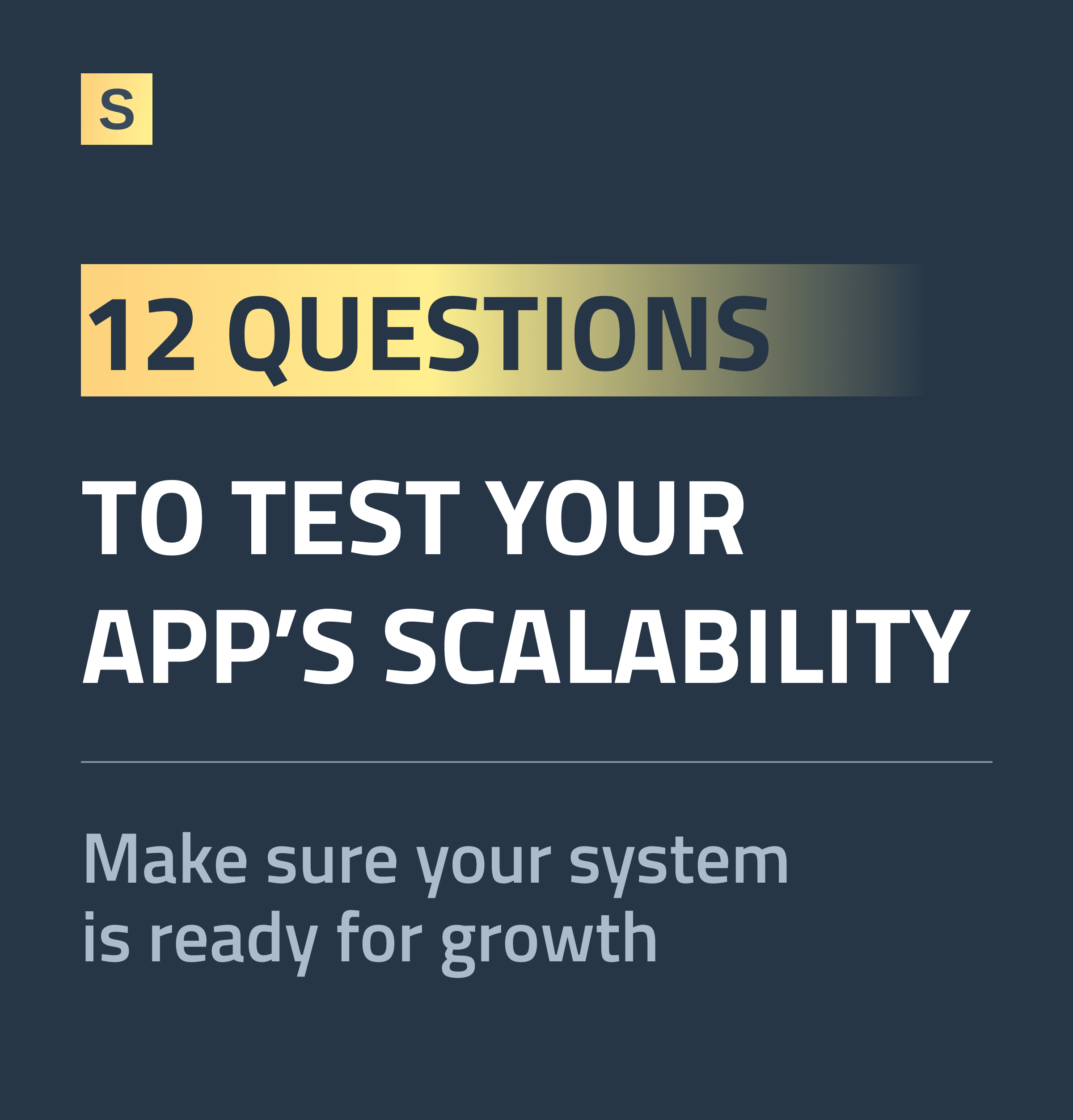
Ready to put your app to the test? Take the 5-minute application scalability assessment and see how your vibe-coded app performs on its journey toward secure scaling.
Work with Seedium to Turn Your MVP into a Production-Grade Solution
As a company that came from the startup ecosystem itself, Seedium is well-versed in supporting new products at every stage of their development. We recognize that vibe coding is a great way to get your product started, and we’ll never make you feel that it was a mistake. Instead, we’ll help you turn it into a market-ready product that can help you reach your business goals.
By using our Smart Scaling Approach, you're gaining access to a team of experienced engineers combined with leading-edge AI-enabled development practices. Feel free to contact us to discuss how we can help your vibe-coded app scale successfully.





